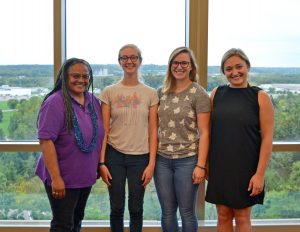
Domain Expert: Louis Epstein
Title: The Music History Game: Assessing Learning through Play
Description: How can we harness the pedagogical power of gaming to help students learn music history? In the last 30 years, “gamification” has changed how students learn content and acquire skills in k-12 education, but it remains relatively untested in higher education settings, especially in music. Our project explores the potential for gaming to enhance how music students acquire historical knowledge and develop critical listening skills. In the summer of 2015, CS and Music majors designed a computer-based, educational game that students in Music 241 played in the fall of 2015. The game consists of hundreds of flashcards featuring multiple-choice questions, each question relying on a musical excerpt that students listen to before answering. Questions are organized into “missions” and “levels,” and students are graded based on how many levels they complete. Collectively, students attempted 38,000 questions (answering 33,000 correctly after multiple tries), generating a glut of data that we will use to answer questions about the reliability of teacher-assigned “difficulty” levels for tasks within the game; the impact of repetition and interleaving of tasks across levels; and how best to measure the effects of differences in time on task between students. Students will continue playing the game during the 2016-2017 academic year, generating new data for the next phase of the project: measuring the effects of metacognitive exercises on retention and transfer.
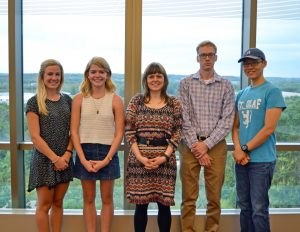
Domain Expert: Ashley Hodgson
Title: The Effect of Hospitalist Collaboration on Medical Mistakes
Description: Hospital patients often get shifted between many specialist doctors within the same hospital stay, often with a lack of organized coordination. Patients needing the most coordination across specialist doctors experience more medical mistakes. This is likely due to the miscommunications that happen as a patient’s care team becomes larger. Some hospitals employ hospitalists, who are doctors that specialize in managing a patient’s care during their hospital stay. Our research will explore questions related to hospitalist’s effect on medical mistakes for both their own patients and also the patients of doctors who spend time collaborating with hospitalists. The questions are: Do patients experience fewer medical mistakes when their doctors work with a hospitalist to coordinate care? Do doctors with a longer tenure working in collaboration with a hospitalist have patients with fewer medical mistakes? This project utilizes a large patient-level hospital data set which includes Florida hospital patients from 2005 to 2012. Included in the data set is information on each patient’s doctor(s). Our main dependent variables will be Patient Safety Indicators (medical mistakes), as defined by the Agency for Healthcare Quality and Research. The independent variables we will work with most will be the presence or absence of a hospitalist (at both the patient-level and hospital-level), the duration of time the patient’s doctor has worked with hospitalists, the patient’s comorbidities and the patient’s expected need for coordinated care. We will also explore potential instrumental variables, such as admission during a weekend.
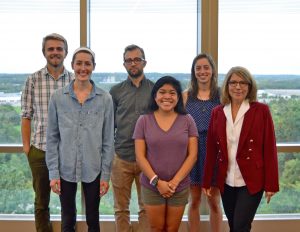
Domain Expert: Mark Legler
Title: Understanding Homelessness in Hennepin County
Description: There are approximately 6000 single adults who use county-contracted emergency shelters in Hennepin County in any given year. Use of shelter varies greatly – half are in shelter less than a week, another half are there more than a month, some as long as a year or more. It is imperative that we understand who uses emergency shelter and what strategies may help them leave shelter sooner. Using a over a decade’s worth of data, we would like to understand the characteristics of the various shelter populations so we can design solutions that might best fit their needs. Are they disabled? Are they able-bodied but with criminal histories that make finding a job difficult? Do they go in and out of GRH facilities or in and out of the criminal justice system? The data file has 20,000 records and covers 11 years of shelter history. It also contains demographic information, use of county benefits and case management services, and criminal justice involvement. Qualitative interviews may also be conducted with single adults in shelter to understand their intermittent shelter use, where they go on other days, and what they think would help them leave shelter.
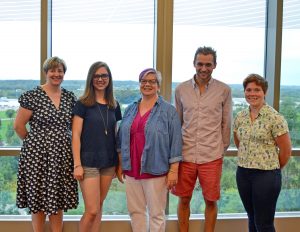
Domain Expert: Shelly Dickinson, Psychology & Neuroscience
Title: Alcohol Place Conditioning Studies in Mice
Description: Most theories of drug abuse and addiction are predicated in part on the assumption that most humans use, abuse, and subsequently become addicted to alcohol and other drugs because of the reinforcing and rewarding effects these substances produce (e.g., euphoria, relief from negative feelings). My primary research interest is the understanding of the neuropharmacological mechanisms underlying the effects of drugs of abuse, in other words, what’s happening in the brain while these drugs are on board. I’m especially interested in whether adolescents are affected differently by alcohol than adults, and use adolescent mice in the lab to look at these questions.
The processes of conditioning (association of environmental cues and drug effects) are thought to be extremely important in craving and relapse in humans in that environmental cues can come to guide and even control behaviors such as drug-seeking. We utilize a range of conditioning procedures in the lab, including place conditioning and taste conditioning. We are also developing a sign-tracking procedure to look specifically at conditioned approach behaviors.
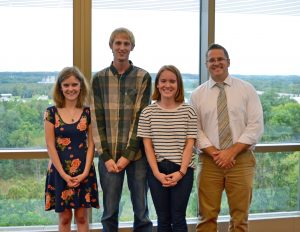
Domain Expert: Chris Chapp, Political Science
Title: Communities that vote: Can legal reforms and election administration policies influence turnout in low-income communities?
Description: The question of why citizens do (or do not) vote attracts steady attention from political scientists. In recent years, researchers have made considerable progress in understanding why some people cast votes and others do not, identifying numerous institutional mechanisms that promote and/or inhibit participation (for example, same-day registration likely promotes high participation, while voter identification laws likely discourage electoral participation). Despite these advances, we do not adequately understand the persistent gap in voter turnout between wealthy and poor communities. In 2014, for example, 24.5% those making less than $10,000/year voted. Among those making over $150,000, the turnout was 56.6%. Recent scholarship suggests that part of the reason for this continued turnout gap is that reforms in election administration are not being equally felt by across the income spectrum. This study will empirically investigate this claim. This study builds on previous CIR studies, examining the relationship between county-level institutional mechanisms and turnout, with an emphasis on how these mechanisms interact with county socioeconomic status. We will draw on two primary data sources. First, we will examine a survey I administered in the summer of 2016 to county election officials. Second, where available, we will examine state elections returns data following the 2016 presidential election. This project will allow students to develop several statistical and inferential skills, including working with nested (multilevel) data structures, working with missing data, data reduction techniques, and data visualization.
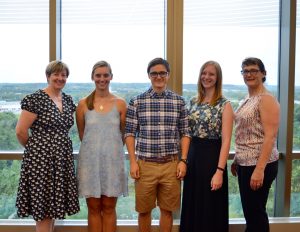
Domain Expert: Mary Walczak
Title: STEM persistence, trajectories, and open questions at St Olaf College
Description: St. Olaf students who begin college in science courses take a wide variety of paths through college. Some stay in science, some switch between sciences, and others choose to major in something other than science. Previous work used transcript and demographic data for students entering a St Olaf between 2002-2013 to answer questions about attrition and retention, trajectories, experiences, and programs relevant to Science, Technology, Engineering, and Mathematics (STEM). We categorized a student’s intention to major in STEM at three points. First, the courses in which they enrolled during their first semester was used to categorize initial intent. Using a set of courses and/or total number of STEM courses after 4 semesters we categorized students as STEM/non-STEM at the end of the sophomore year. Major at graduation was used to identify STEM/non-STEM students at a third and final point. We then quantified the number of students in each of the 8 different paths to graduation following our categorization exploring general trends in retention/persistence. We were specifically interested in those students whose trajectories categorized them as early-switchers, late-switcher, or double-switchers. Next we investigated any potential gender effect or “new building effect” and compared participation in an integrated introductory chemistry and biology course sequence to traditional discipline-specific sequences. We plan to build on this research, adding additional cohort years to the data.
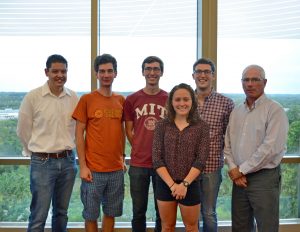
Domain Expert: Rodrigo Sanchez Gonzalez
Title: Development of a Method for the Analysis of Molecular Tagging Velocimetry Images Based on Grid Parameterization
Description: Numerous flowfields related to combustion and high-speed flight are characterized by non-equilibrium effects, and the acquisition of fundamental information to describe and model fluid behavior is required to drive technological advances in these fields. A detailed description of turbulence requires systematic integration between theoretical modeling and experimentation that directly relates model parameters to experimental observables. Molecular Tagging Velocimetry (MTV) methods are an alternative to Particle Image Velocimetry (PTV) for high-speed turbulent flowfield characterization. MTV methods are particularly useful when large errors in velocity determination that result from the use of particles make PTV ill suited. However, despite the potential of MTV methods for the study of high-speed flows, their application have been limited by a number of factors that include the lack of ready-to-use data analysis codes, which are largely written in-house. A method to analyze of MTV image pairs to estimate quantities such as vorticity as well as pressure and density fluctuations, in addition to space-resolved velocity, will be explored. This method will involve proper image transformations to map an entire MTV grid distorted by the flow velocity onto the first perfect grid.
You must be logged in to post a comment.